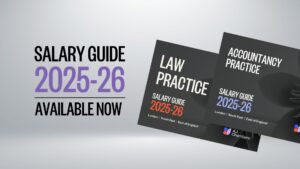It has been well documented and reported the high level of M&A activity within the Accountancy Practice market. The factors driving this I have discussed in previous articles. These factors are still at play.
Let me outline Accountancy Practice owners’ M&A options. With many individuals using the phrase “post-pandemic”, the Partners falling into the category of waiting are now engaging with us to assist with their exit plans. Which I believe will drive higher activity levels within the market as PE houses appetites are not dampening. The fight for talent in the sector is also increasingly a driver behind acquisition. To secure the talent working at the selling practice.
Deal structures are becoming more creative and tailored, rather than the traditional multiple of GRF model (third upfront, third after year one, and third after year two); although, this model is still standard with acquisitions of smaller practices. With practices adopting more technology, driving efficiency, and outsourcing compliance type work abroad, we see those firms yield more significant profit margins, allowing for EBITDA multiples to be applied upon sale. However, some acquirers do take the position of using EBITDA. To value the acquisition opportunity rather than fees as normal course.
Plans for owners
Additionally, with advisory type work becoming more common place across the Accountancy Practice ecosystem and tax specialist practices, multiples of revenue are being used more frequently, rather than the traditional GRF metric.
In recent years, the spread of age profiles within multi-Partner practices is prevalent. Resulting in each Partner having their own retirement plans and wishes for the future as a consideration. This has meant a more flexible approach to tailor a ‘package’ for each Partner individually. This may mean younger Partners are retaining equity at group level within the new structure or at Practice level under the new ownership or umbrella. Some Partners leave sooner than others during the earn-out period and beyond, or a reduction in days immediately purely to assist with managing client relationship handover. All of which is important for the future of the business and client base for both seller and acquirer to protect their investment and deferred consideration.
I have detailed general examples of models currently being utilised below, covering pertinent top-level points for more context.

TRADITIONAL MODEL (GRF/REVENUE)
Lower multiples will be implemented where the risk profile is increased for the acquirer;. This may be ageing client book, instant retirement of Partners. Therefore not assisting with transitioning clients, or poor internal records both for clients or Practice itself. Conversely, slightly higher multiples of up to 1.25x can be achieved if the selling practice has specialisms that strategically fit well with the acquirer.
Younger Partners or those who intend to continue in the ‘next chapter’ of the practice are often presented with the opportunity to ‘buy in’ to equity within the new owners’ structure. Alternatively, some acquirers have salary Partners. With great incentives and bonuses to create an environment of reward for business growth and performance.

EBITDA MODEL
In the same vein as the traditional model, factors will be at play. Allowing for lower and higher movement within multiples applied. By the very nature of firms’ size, when EBITDA multiples are involved, you will encounter a broad scope of ages. Which will result in individual and bespoke solutions for each Partner. To accommodate the Partner requirements from the vendor side, we do see in some circumstances part purchase of the practice. Typically 51%, usually when PE or investment funds are involved. The 51% purchase allows for the retiring or older Partners to achieve exit. Whilst remaining Partners still have ownership and autonomy to run the practice going forward. With all the benefits of great infrastructure and centralised support.

PRIVATE EQUITY APPROACH
In terms of structures, there are a few variables dependent on the approach by PE or VC Houses, and of course, the equity holders of the practice outlook. Typically, there are two main models being complete acquisition or part acquisition (majority or minority).
Please see below a further brief on both;
Complete Acquisition
- 100% purchase of assets or shares of the practice
- Partners would remain salaried, with a performance bonus included as part of the package.
- This model would allow any retiring Partners to achieve exit whilst allowing younger Partners. Or those that wish to stay on for the foreseeable to realise the value they have already built.
- Often the Partners would continue to run the practice. Ensuring that an ‘accountants or lawyers’ mindset is maintained and instilled within the practice to protect the DNA that has been successful to this point. Alongside the incumbent Partners, the PE/VC will parachute in Senior Management to assist in running the practice and set out objectives for future growth and acquisitions.
Part Acquisition
- This model we are seeing more frequently in recent months, whereby a VC/PE would purchase a majority or minority position in a practice
- The current Partners would be able to de-risk. By realising some of the value built to date whilst having the backing of PE/VC’ war chest’ to execute growth plans via acquisition. Or internal infrastructure improvements that may otherwise not have been achievable.
- This model essentially means that the VC/PE sit in the background behind the scenes. Simply using the practice as a vehicle in which to invest into the sector. The positive to this model is that the incumbent Partners will still be responsible for running the practice day-to-day. To maintain the culture that has been so successful to date. VC/PE involvement is a relatively light touch in that they would solely concentrate on growth strategy, internal enhances (such as technology), senior personnel and acquisition discussions.
In terms of ultimate exit, they are usually looking at 3-5 year exits by the very nature of such funds. However, we see these exit plans extended to more like 5-7, sometimes 8 year plans within the accountancy or legal market. Ultimately, the exit options will be to sell onto another fund or a larger firm. For Partners, this will offer the knowledge of a higher value business. By the time it comes for sale and comfort that a valuation at the higher end of the market will be achieved.
Of course, the above is very broad strokes and an overview of the various options for sale, exit, or merger. Which will hopefully provide insight into how acquirers are currently engaging in your sector. We can of course, delve into more detail or give more context if required. To yourself or fellow Equity Partners to explore further.
Interested in learning more or are considering your exit plans or growth plan via acquisition? Please contact James Gosling, Head of Mergers and Acquisitions, for a confidential discussion.
Latest insights
Helpful External Resources:
Accountancy: ICAEW | Accountancy Age | Accounting Web
Law: Law Society | Law Gazette | Legal Futures










 AJ Chambers Recruitment Ltd,
AJ Chambers Recruitment Ltd,